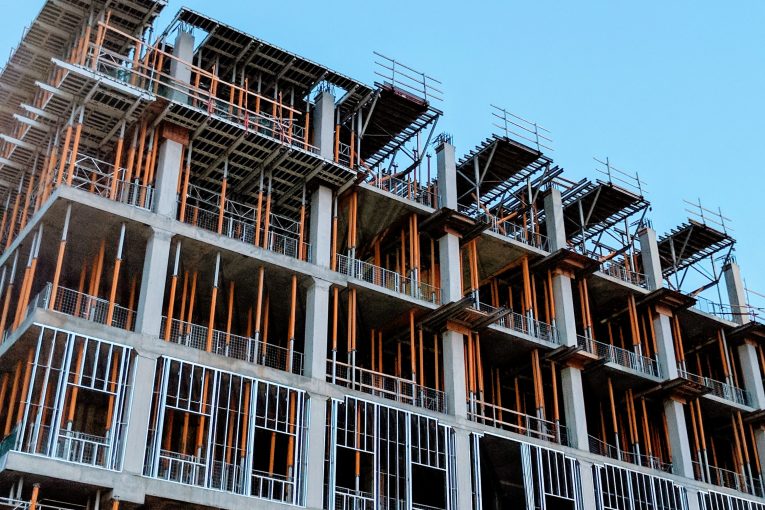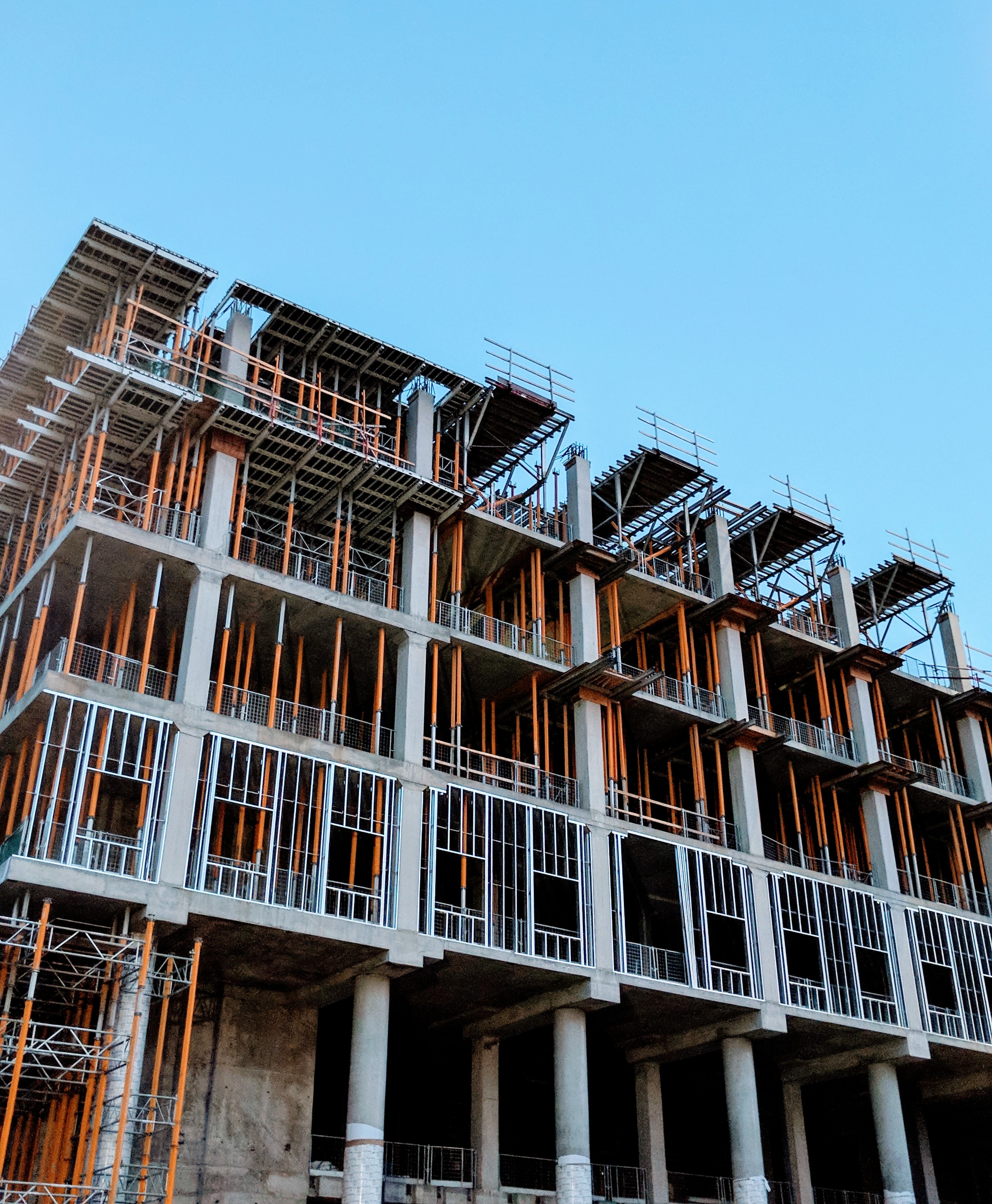

By David M. Greenwald
Executive Editor
One of the big questions Davis faces is whether the courts step and say that Davis’ growth policies run counter to state housing law. In recent months, we have seen the state step in to file lawsuits against places like Huntington Beach and Elk Grove to enforce state housing laws.
In March, the state filed a lawsuit after Attorney General Bonta and HCD each issued multiple letters last month under their separate enforcement authorities, urging the Huntington Beach City Council “to reject these unlawful and willful attempts to flout state housing laws” which the state believes “directly threaten statewide efforts to increase the availability of low- to middle-income housing opportunities in the midst of a statewide housing crisis. “
“I’ve said it before and I’ll say it again: Local governments don’t get to pick and choose which state laws they want to follow. Huntington Beach’s lawsuit is another baseless and obstructionist attempt by the city to defy state housing laws,” said Attorney General Bonta. “Our state housing laws are a crucial tool for bringing much needed affordable housing to our communities.”
But the state is not the only threat.
This week, we saw YIMBY Law file a lawsuit against Redondo Beach for failing to recognize the builder’s remedy.
YIMBY filed suit against the city of Redondo Beach, California following “the city’s illegal rejection of a builder’s remedy project with 2,700 homes.”
According to a release from the group, “The suit aims to reinforce the legitimacy and effectiveness of housing elements, or housing plans, that cities across the state create every eight years.”
“Redondo Beach has ignored state law as well as their own municipal code by not treating their housing plan as a meaningful, effective part of the general plan,” said Rafa Sonnenfeld, policy director at YIMBY Law. “Because of their actions, they don’t have a compliant housing plan and the builder’s remedy applies in the city. These homes must be approved.”
According to the group, “By not treating the housing element as a meaningful or effective piece of law, Redondo Beach officials bypassed their own local charter which requires them to bring major changes to the General Plan, including the Housing Element, to the voters for approval.
“Without voter approval, the city’s housing plan—although approved by HCD—has not been locally passed or enacted. In other words, it is not in effect. This allows consequences including the builder’s remedy to come into effect until the city completes the steps outlined in Redondo Beach’s local law.”
That last part should be a huge flag to a city like Davis—especially in the next RHNA cycle when it is expected that the city will have to rely on peripheral projects to meet its RHNA needs. The requirement from HCD is that the land actually be rezoned, which, whether it is built or not, requires voter approval in Davis.
For a while now, the Vanguard has been warning that Davis is about to run headlong into the state, but this lawsuit demonstrates that the state itself is not the only threat.
YIMBY Law notes: “The builder’s remedy project proposed in Redondo Beach would add 2,700 homes, including 540 homes reserved for people with low incomes, to a lot that was previously a power plant.
“If approved, this project would add a larger number of affordable homes than the city has allowed in the last ten years combined.”
Additionally, YIMBY Law’s case would potentially open up the city to allow more builder’s remedy projects which could add thousands more homes to the community.
The builder’s remedy requires cities without a compliant housing plan to approve any housing project that meets affordability requirements of reserving 20% of homes for low-income households or 100% for moderate-income households.
Specifically, “if a California city has not passed a ‘substantially compliant’ housing element, the California Housing Accountability Act indicates that the jurisdiction cannot use its zoning or general plan standards to disapprove any housing project that meets the affordability requirements.”
And as we know, Redondo Beach is not alone—Redondo Beach is one of dozens of California cities that have not met requirements for their housing plans. That includes Davis.
This lawsuit, along with five other housing element lawsuits YIMBY Law filed earlier in 2023, aims to bring the city of Redondo Beach into compliance and to facilitate projects that fall under the builder’s remedy in the meantime.
“Housing elements are more than policy documents: they’re a part of the General Plan and have immediate impacts on what can be built in each city,” said Sonja Trauss, Executive Director of YIMBY Law. “Cities in California have to pass compliant housing elements locally, or else lose local control of land use. Redondo Beach is no different.”
This is another case that bears watching in Davis.







Thanks David for the tip regarding YIMBY Law. Before now I didn’t know this vital organization existed. I just signed up for YIMBY’s Law’s email list because I am a proud YIMBY. Usage of YIMBY or NIMBY is in any manner derogatory. I have reported the City of Davis to YIMBY Law for not meeting the requirements of its housing plan. I have requested that YIMBY Law consider suing the City of Davis.
I meant to say that neither YIMBY nor NIMBY are derogatory terms.
If some people declare NIMBY to be derogatory, then the very similar term YIMBY is also derogatory. The difference being only 1 letter/word. In this instance, it’s either all or nothing. Ron Oertel has used the term YIMBY multiple times on this site in his comments.
Walter, YIMBYs literally chose this name for their organization(s). You already know this, and it is not a derogatory term.
NIMBY, on the other hand, is a derogatory term – which implies “hypocrisy” – your favorite subject.
In some ways, I like it when others use derogatory terms – as it’s really a reflection of themselves.
If NIMBY is indeed derogatory, then YIMBY is likewise. It’s a 100% accurate reflection of who NIMBYs really are. Ron Oertel has used the derogatory term YIMBY on numerous occasions going back to 7/16/23 not in the context of a name of an organization.
I think there is a bit of the difference between the two two terms.
NIMBY is a game given to people who oppose housing in general
YIMBY is an official organization that was created as a counter-balance to NIMBYism.
Given that NIMBY is in common-usage and is fairly innocuous overall, I don’t think it is a term that should be discouraged.
There is an enormous difference.
YIMBYs are a front for business interests, who apparently chose their name in an attempt to put a “positive spin” (and contrast the difference) with those they label “NIMBYs”.
Some seem to do so. But it literally stands for “Not In My Backyard”. Which implies that they’re “o.k.” with sprawl, for example, in “Someone Else’s Backyard”.
Which implies hypocrisy. How is that not a slur?
Those who generally oppose sprawl do not necessarily limit their concerns to a particular “backyard”.
They’re a front for business interests, the same type of interests that have always opposed preservation of open space and farmland.
It’s not “innocuous”, and it’s yet another attempt to create enemies (“us” vs. “them”).
Walter,
What a counter-productive thing to do. Asking for a lawsuit against your own community where Davis residents would wind up paying for attorney fees for a lawsuit you motivated. If you are not happy living in Davis, perhaps you should consider moving to another city?
I don’t expect them to actually sue Davis, but they might send them a letter telling the City that they are out of compliance with state housing laws. The City already know this, but it might encourage them to speed up the process of getting into compliance.
Nice try Ron, better luck next time. I didn’t say they must sue or it was essential that they sue. I choose my words carefully, unlike some other commenters.
If anything, it’s Davis NIMBYs that should get out of dodge. They are primarily responsible for City being unable to fulfill its legal housing mandates.
Davis, of course, is not trying to “block” the builder’s remedy.
As far as YIMBY Law is concerned, I do wish that they would post the amount of money they receive (and from “who”) right on their website, rather than whatever process is required to see it. As the Vanguard used to do. (Seems like the Vanguard has stopped doing so, as well.)
One question I would have (that I’m sure they considered) is what “standing” YIMBY Law has to initiate such lawsuits, and how that overlaps with the purview of the attorney general.
But like I said before, it’s actually going to take some “suffering” by cities, before they rise-up against the state’s “targets”.
Unfortunately (if you want to put it that way), the housing and economic downturn (the latter of which seems to be delayed) will likely derail the state’s targets anyway. Which may also derail the ongoing effort to remove control from the state.
Forgot to mention the “population downturn” and “lack of funding for affordable housing”, as well.
Doesn’t seem “likely” that the state is going to succeed in actually getting the housing built, other than a few examples.
https://48hills.org/2023/08/lots-of-housing-laws-not-much-housing/
I don’t believe they are required to reveal exactly who their funders are, just the to total they receive from Contributions, Grants, and Gifts. After a few minutes of work, I found out that amount for 2021.
From the IRS Website:
https://www.irs.gov/charities-non-profits/exempt-organization-public-disclosure-and-availability-requirements#:~:text=Tax%2Dexempt%20organizations%20must%20make,IRS%20makes%20these%20documents%20available.
Have you requested their Form 990 yet or are you are just going to continue complaining they don’t post it on their website? It says upon request. I found their IRS Form 990 for 2021 without asking anyone.
Walter,
This YIMBY Law has some serious issues regarding disclosure of who is funding them. Here is an article covering this issue where it clarifies that YIMBY Law is not disclosing who their donors are and how much they are donating. If they are such a legitimate group, why are they not disclosing where their funding is coming from? If you have the info on who their donors are and how much they are donating, please post the link(s).
https://www.housingisahumanright.org/why-is-california-yimby-hiding-the-names-of-big-money-contributors/
Nonprofits aren’t required by law to name their funders. People can complain all you want Eileen, but the there is no such legal requirement. I know of many nonprofits that don’t disclose their funders, including Yolo County based nonprofits and even the infamous Moms for Liberty. Some organizations willing reveal some donors for their own reasons. One common example is when they name a new building after someone or want to publicize donors to entice further donations.
It will be interesting to see where the political issues in regards to housing go for Davis.
It would take a group like YIMBY Law to challenge Measure J. A developer wouldn’t want to do it because they run the risk on incurring the wrath of the city (officials and people).
On the other hand, I’m still waiting to see if a developer can get a county project approved adjacent to Davis and the city would then have to consider annexing it (with no Measure J vote). I wonder if a YIMBY group could help push that through.
As a resident of Davis, I’m not sure if I advocate these things. I’d like Measure J struck down (direct democracy is stupid). But I also don’t want unmitigated peripheral growth. Measure J did that by strangling peripheral growth to the point of crippling the city.
Or if things playout over the next 20 years, the city will be forced to build 6 story residential complexes all over town to keep up with housing demands. But Davis won’t be able to keep up with the infrastructure maintenance and demands (roads that aren’t being kept up under current conditions, then there’s traffic mitigation, the need for local mass transit). So after a painful period the city decides to grow on the periphery so voters either vote for peripheral projects or the strike down Measure J.
“Housing demand” and “RHNA targets” are two entirely-different things.
There may not be sufficient “housing demand” for developers to actually pursue “6-story residential complexes” – especially in a town in the middle of the valley, surrounded by towns which pursue sprawl. (Other than student housing.)
Who would live in them, other than students?
And where is the funding going to come from, to address the “affordable” components?
Ultimately, the state will be forced to take responsibility for this via their “targets”. And if they’re actually “successful” (despite the population, housing, and economic downturns), that’s when control will be removed from the state via a referendum. And it will be led by towns such as Redondo Beach, which are not able to expand outward in the first place.
““Housing demand” and “RHNA targets” are two entirely-different things.”
Sort of
If that was the case, the state would be ordering San Francisco to tear-down more than 6% of its housing – based upon population loss.
The RHNA means Regional Housing Needs Assessment which is based on the existing and projected housing need and distributed through out the various jurisdictions based on some sort of methodology. The in essence, the RHNA is an attempt to derive the actual housing demand.
In a place like Davis, we probably have a higher housing demand, because SACOG has taken into account our slow growth policies.
But the fact that there are five Measure J projects jockeying for ballot position is an indicator that investors see a high housing demand in Davis.
Again, if that was the case – San Francisco would have a “negative” RHNA number.
“Some sort of methodology”, indeed.
“Housing demand” is also entirely-different than “housing need”. If one were to consider “need”, it would generally not include those who don’t already live in a given city – e.g., assuming that more jobs aren’t being created in the city.
There would be plenty of “demand” to exponentially-increase the population of Marin and Sonoma counties (e.g., on protected farmland – via zoning and land trusts). Does that mean that those areas should be opened-up for development?
Your point is misplaced, distractionary and irrelevant. Particularly since we are talking about Davis here.
You’re referring to statewide laws, and trying to narrow down the impact to Davis.
But it’s exactly the same issue in regard to other locales which are surrounded by farmland, protected via land trusts, zoning, urban limit lines, etc.
I would argue that since so many “Davisites” are from the Bay Area, they’ve ‘imported” their values regarding protection of farmland and open space to Davis.
This is one of the positive byproducts of having a UC as an adjacent neighbor – the “type” of people that are attracted to the city.
But we have seen (some) adoption of slow-growth goals beyond Davis within the region – just not enough. But since state population is leveling-off, this will help achieve a goal of sustainability at some point. (Even as there’s a “shifting” of population from environmentally-friendly areas – such as the Bay Area, to “sprawling” areas in the valley and foothills).
And since a lot of insurance companies are no longer issuing policies in high-risk fire zones, that will also help reign-in growth and development. (I believe this would apply to the Sierra foothill region, as well.)
From the SACOG RHNA Methodology Menu
So it looks like UCD’s impact isn’t directly attributed to Davis. But I wonder if SACOG takes into consideration UCD’s indirect impact on the city of Davis. Many students tend to be lower wage workers and so would qualify as part of the calculations but many aren’t employed or fully employed…so does that impact the calculation?
It appears that Davis is not impacted by UCD’s job growth (as it is outside of Davis).
City, MTP Growth, %Region Growth, Total RHNA
Davis 3001 1.36% 2075
W00dland 4466 2.022% 3087
My guess is that maybe there are more jobs in Woodland (if UCD jobs don’t count) and even more likely is Woodland’s proximity to Sacramento (it’s closer to the Airport and Natomas) plays a part in the regional projected growth numbers for Woodland.
To be clear about what that housing demand actually means for the city: I think those little peripheral projects are probably an indicator of high housing demand IN THE REGION. I think it’s less of an indicator of the health of the city of Davis itself….or to put it another way….more and more people want to move here but commute and shop in places outside of Davis. The lack of retail, entertainment, restaurants..etc… really reflect this. I think UCD really hides how truly podunk the city of Davis truly is.
As for those planned 10 story residential projects…yeah that was a bit of hyperbole but not by much.
I think I agree. Nobody here in town wants un-mitigated growth, except perhaps the property owners. We have seen exactly what that kind of growth looks like and it sucks.
But measure J is too crude an instrument and it sets up a dynamic that perversely ONLY allows for that “bad” kind of growth because it subverts out central planning function and delegates it to the developers.
That is why I like the “modify measure J” option as opposed to the “end it” one.
Understatement.
Davis might actually have more exposure than just a non-compliant housing element. As it was explained to me, city growth ordinances like measure J are supposed to pro-activley pass state review for legality as part of one of the more recent statewide affordable housing acts. When we re-authorized measure J the last time around that review process was NOT taken to the state by the city for such review. This is something that was explained to me by a local attorney, and I’m not sure that Im repeating it correctly, but as I recall, there is apparently a case to be made that J/R/D might be illegal on those grounds alone…
Maybe something vanguard investigative journalism can confirm…